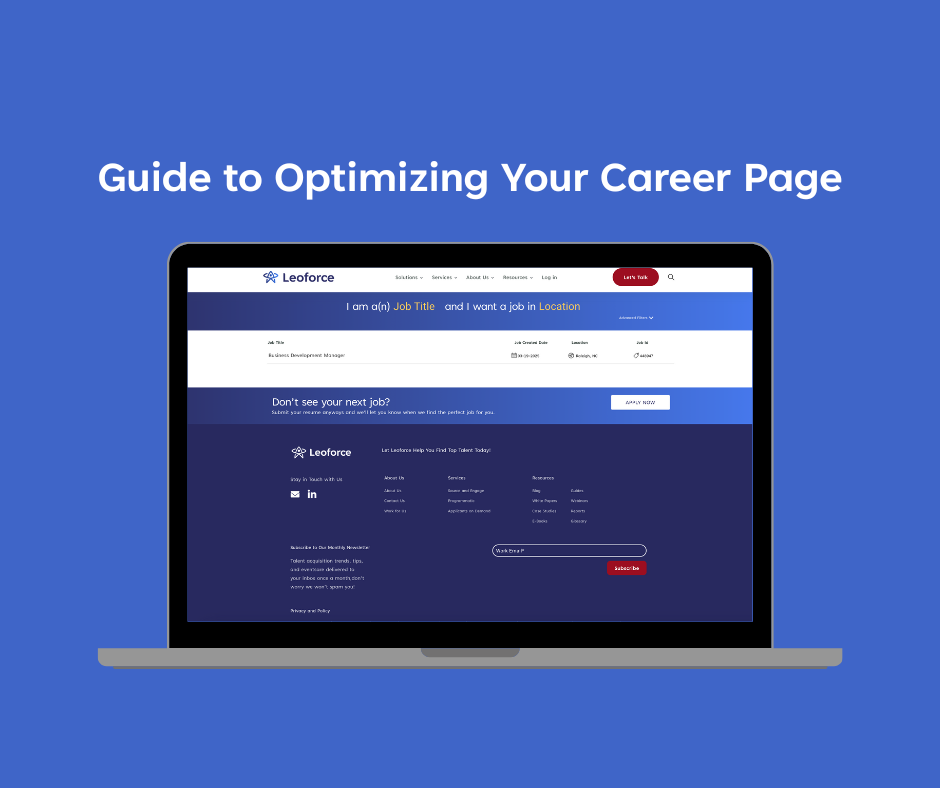The Quest for Work-Life Balance

Congressman Paul Ryan doesn’t want to be Speaker of the United States House of Representatives unless he can maintain a healthy equilibrium between politics and his personal life. Country Queen Carrie Underwood admits to suffering from “mom guilt” since the birth of her first child this past February. Working men and women in almost every company across the country complain about not having enough hours in the day. Are being successful in your career and being a good parent, good friend, and good human being mutually exclusive concepts?
As a recruiter, one of your duties is to stay abreast of industry trends so you can attract the best talent by offering candidates what they want. Candidates want a higher salary, right? As it turns out, 67 percent American businessmen and women said they would take a pay cut if it meant maintaining a better work-life balance, according to the Allstate/National Journal Heartland Monitor Poll. What is this elusive work-life balance, and is it possible to attain?
Glassdoor recently released a report identifying the 25 best jobs for maintaining work-life balance in the United States, and two recruiting industry positions made the list. According to the report, talent acquisition specialists have the third best work-life balance out of all jobs in the United States and recruiting coordinators enjoy the sixth best. This is great news for the individuals in these positions, but I think it begs a bigger question:
As a recruiter or HR professional, do you have a responsibility to help your employees achieve a healthy work-life balance?
While I certainly wouldn’t suggest that the responsibility of realizing this goal lies solely on your shoulders, I do think you are in a unique position to facilitate this desired equilibrium. Let me help you help them—here are four ways that you can support employees who are in search of a balance between work and their personal lives.
Offer workplace flexibility.
Here’s the obvious fix for creating work-life balance: allow your employees to have flexible schedules. There are many ways to go about offering workplace flexibility. For example, you could follow the trend that is sweeping Swedish companies and implement six-hour workdays, or follow tax advisory firm KPMG’s example and try out a four-day work week…or you can take a more conservative approach. Give your employees the first Friday of each month off, allow employees to work remotely, or perhaps just work out flexible schedules on a case-by-case basis.
The benefits of workplace flexibility are twofold: your employees will be happy to spend more of their lives away from the office; but also, many companies that have implemented shorter work weeks have observed higher profits and greater productivity in employees. Though this easy fix won’t work for every company, it is something to consider.
Provide family-friendly options.
Help assuage the mom—or dad—guilt that is plaguing your employees by offering family-friendly options. Draw inspiration from tech company SAS, which offers on-site daycare for employees’ children, on-site healthcare facilities, and even the option to work fewer hours for single parents. At SAS, working parents don’t have to choose between being career-driven and family-focused—they can be both. I don’t think it’s a coincidence that SAS consistently ranks as one of the top places to work—in the world.
Make plans with your employees.
Congressman Sean Patrick Maloney weighed on the work-life balance conundrum saying, “We all complain about not having enough time, but very often we don’t have enough focus.” As an HR professional, help your employees find that focus.
Use what’s left of this month to make plans with your employees for the upcoming year. Find out how they feel about their current work-life balance, and see if you can accommodate their needs if they’re unhappy. Lead professional development courses on how to set goals and be a “ruthless prioritizer” as Brady Stewart, vice president of global e-commerce operations for Levi Strauss & Company, puts it. With your guidance and focus, you can help your employees attain a proper work-life balance.
Set the example.
This tactic might be the hardest of all for you to employ. As an HR professional, you should set the example of living a healthy work-life balance, and you should encourage company leadership to set an example as well. Here is Nike’s Chief Operating Officer Eric Sprunk’s take on what management’s role should be:
“If you are a leader, you have got to find some balance in your life, so that you can provide that to the organization. Because I am a firm believer, and I will use the male part of the gender, that the better father, son, brother, uncle, friend you think you are, the better employee for Nike you are going to be…If you see me as the COO walking out the door to go coach my kids’ teams, you should say to yourself: ‘Geez, if Sprunk can do it, I got to find a way to do it.’ Yeah, I want you to find a way to do it. If that’s how you get energy, do that. If it is a hobby, find time for the hobby. If it is traveling, find time to travel.”
I can’t think of a better way to say it.
Americans have earned the stereotype of being workaholics, but with the changing generations in the workplace, it is high time that we ditch this reputation. Employees who maintain an appropriate balance between their work lives and their personal lives will not only be happier and healthier individuals, but they will also be more productive and better at their jobs. Do your best to dispel the notion that we have to choose between being successful at work or being successful in every other aspect of life.





